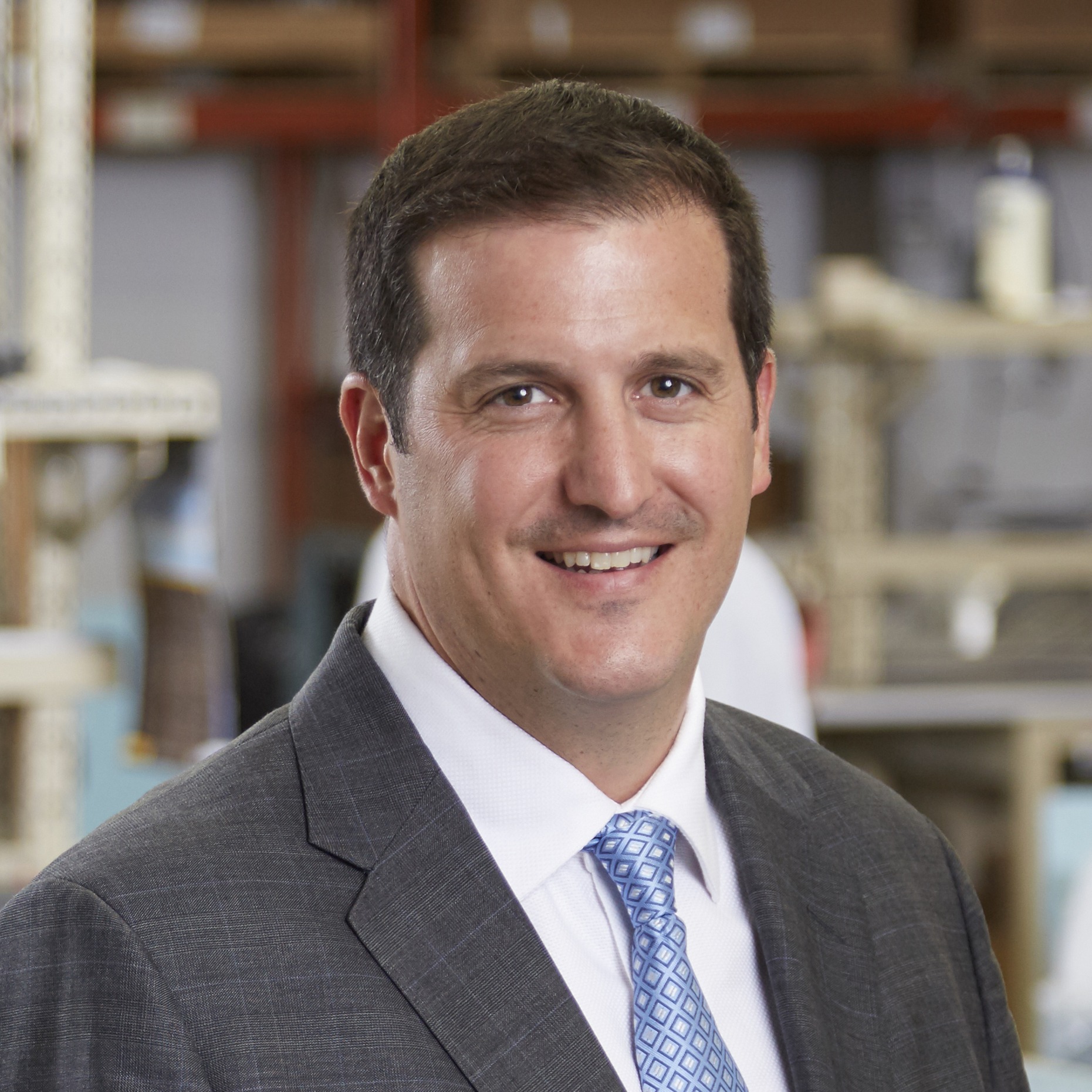Story at a glance:
- Most people have made changes to their hand hygiene practices since the start of the pandemic.
- The XLERATORsync fuses no-touch, high-efficiency fixtures on the sink deck and allows users to complete the entire handwashing and drying process in one place.
- More people now report wanting touchless features in public restrooms.
While often seen as an afterthought in building design, public restrooms are frequently among the most visited spaces in facilities, from schools to stadiums to restaurants. Given their nature, they are also a primary area of concern for the spread of germs. While both safety and sanitization were crucial topics before the Covid-19 pandemic, the past two years have pushed them to the forefront of everyone’s minds.
As facility operators are very aware, restroom patrons and maintenance professionals are frequently required to touch an array of surfaces in a public restroom—door handles, stall latches, toilet seats, sink faucet handles, and more. But this practice can and should be improved upon; the best method to reduce the spread of harmful germs in a Covid-conscious world is to reduce the overall number of touch points through smart design and product selection.
In today’s climate, facility visitors appreciate hygienic considerations, while owners are additionally focused on savings and sustainability. One does not often consider the impact of hand drying options, however the XLERATOR Hand Dryer and other models in Excel Dryer’s touchless, high-efficiency product line represent an optimal solution that helps to satisfy all three factors.
The Covid-19 Effect

Energy-efficient hand dryers inside Brooklyn Bowl. Photo courtesy of Excel Dryer
The world is changing—the ongoing effects from Covid-19 have transformed the way people think about public restrooms. Here’s an unsurprising statistic: Nine out of every 10 people have made changes to their hand hygiene practices since the beginning of the pandemic. Similarly, new research indicates that a similar percentage of Americans say it’s important to have touchless features in a public restroom, and 47% say their fears would be alleviated if HEPA filtration was added to current hand dryer installations. The shift in attitude is clear—the no-touch solution is now the preference among the general public. And the experts agree. According to the Centers for Disease Control and Prevention (CDC), frequently washing your hands is one of the most critical ways to protect yourself and others against the coronavirus.
While Covid has been the catalyst for this rapid change of opinion, this isn’t a new topic. In 2010 Northwestern Memorial Hospital (NMH), one of the country’s premier academic medical centers, launched a major handwashing campaign aimed at employees, patients, and visitors: clean hands every time. NMH found that two-thirds of Americans fall short in adopting good handwashing habits and also emphasized that 80% of infections are transmitted through touch. Why is this important? Studies have shown that handwashing can prevent one in three diarrhea-related sicknesses and one in five respiratory infections.
Looking to the Future: XLERATORsync

XLERATORsync, a component in the D|13 Sink System by D|13 Group, fuses no-touch, high-efficiency fixtures on the sink deck and allows users to complete the entire handwashing and drying process in one location. Photo courtesy of Excel Dryer
Excel Dryer knows important statistics, driving the company to continuously look to the future of the commercial restroom. A more recent innovation that illustrates this commitment is the XLERATORsync, a component in the D|13 Sink System by D|13 Group.
The system fuses no-touch, high-efficiency fixtures on the sink deck and allows users to complete the entire handwashing and drying process in one location. The XLERATORsync reverses and fans out the high-speed airflow to blow away from the user and toward the bottom of the sink basin, which is designed with the appropriate depth and angles to keep the air and water in the sink and away from the user.
A Patriotic Partnership
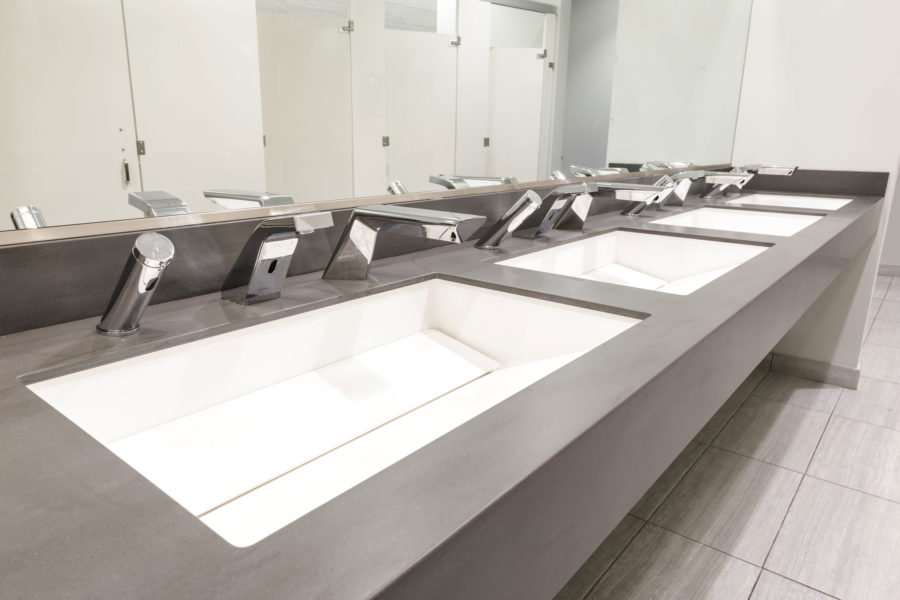
Restrooms at the Optum Field Lounge at Gillette Stadium, home of the New England Patriots, were renovated to include Excel Dryer products. Photo courtesy of Excel Dryer
The Optum Field Lounge at Gillette Stadium, home of the New England Patriots, is an exciting VIP space at field level. Offering a terrace, HD screens, a massive media wall, premium bars, and state-of-the-art capabilities, it offers an event experience unparalleled for corporate receptions, parties, fundraisers, and more. Unfortunately, until a recent renovation project, the lounge’s restrooms didn’t stack up—featuring unremarkable aesthetics and an insufficient design for a high-traffic area.
That changed when the traditional sinks and soap dispensers were removed in favor of the D|13 Sink System. Because the sink and dryer were designed in tandem, the basin is angled appropriately to handle high-speed air flow from the dryer. In addition to improving the guest experience, this strategic design cuts down on maintenance time, as it minimizes the risk for slips and falls that wayward water could cause.
The sink system itself is designed for simple, accurate installation; the counter and cabinet components arrive partially assembled, and the system includes a template designating optimum locations for electrical, drains, and water. Brackets are pre-drilled to provide maximum flexibility in installation. It’s customizable in size, shape, and material—allowing designers to change and elevate the restroom’s aesthetic. Besides this visual impact, the sink system improves the facility’s energy use, as its operation consumes less electricity than traditional wall-mounted dryers—positively contributing to Gillette’s overall sustainability goals.
Additional Options for Safety and Hygiene
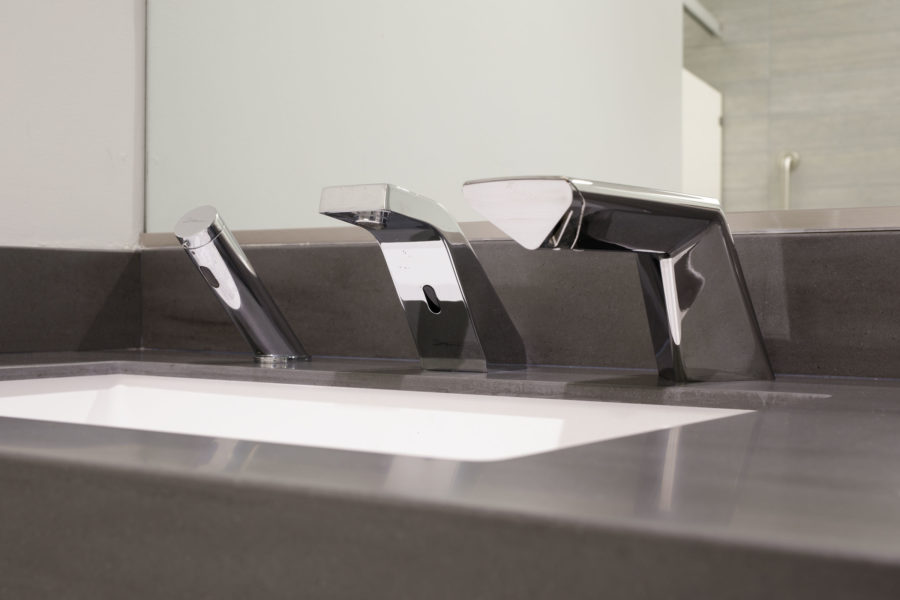
Inside Optum Field Lounge at Gillette Stadium. Photo courtesy of Excel Dryer
As with all Excel Dryer products, including the XLERATOR, XLERATOReco, and ThinAir Hand Dryers, the motor in XLERATORsync is sensor activated and operational only when a user places their hands below the dryer unit. Both air and water from the hands are blown down and away from the user, as opposed to being trapped within the unit—a frequent issue with trough-style dryers, also commonly called “hands-in” units.
For an added level of protection, some customers install stainless steel antimicrobial wall guards below the wall-mounted dryers. These are especially beneficial in high-traffic facilities and on walls not easily disinfected, such as drywall. The wall guards are manufactured with Microban® antimicrobial additives and are designed specifically to fit securely underneath any Excel hand dryer, keeping germs off surfaces and creating a more hygienic restroom environment.
The Added Benefit of HEPA
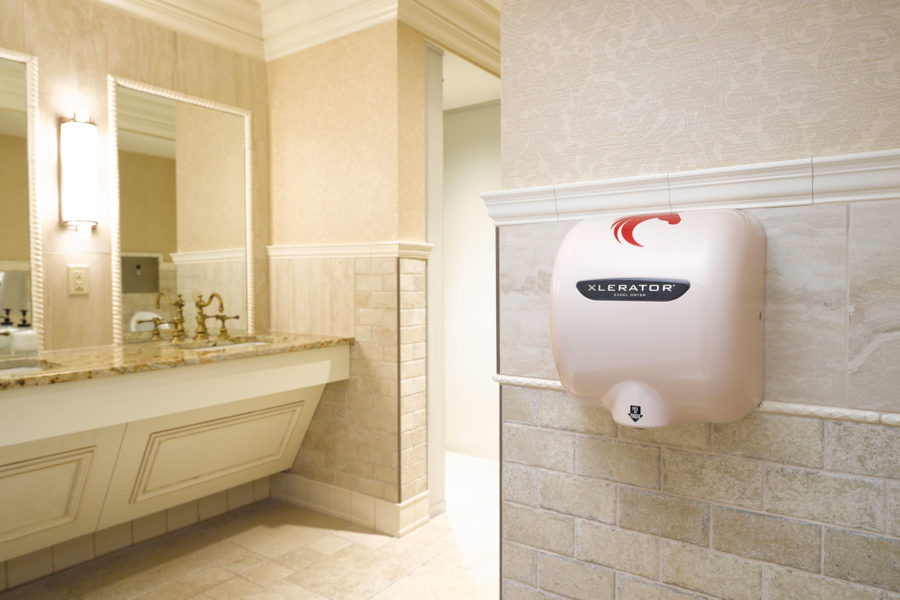
Photo courtesy of Excel Dryer
It’s for good reason that nearly half of Americans say their public restroom fears would be alleviated with a HEPA filtration solution; the feature has been proven to offer an additional level of hygienic protection. In consideration of the pandemic, Excel Dryer contracted LMS Technologies, a preeminent air media and filter testing company, to conduct viral filtration efficiency testing on XLERATOR’s HEPA filtration system. The 380 million viruses released into the chamber during testing ranged in size between 16.5 and 604.3 nanometers—not dissimilar to the size of the novel coronavirus. The result was the HEPA filtration system removed 99.999% of viruses from the airstream, elevating an already superior level of hygienic hand drying.
In response, Al Vatine, the president of LMS Technologies, said, “The virus used in the test represents all viruses, like coronavirus, in terms of their size or how they would react to the filter. I can, with confidence, tout the effectiveness of the XLERATORs with HEPA filtration systems. If it can perform this effectively in an enhanced, virus-infused scenario, it surely would provide effective filtration in real-world settings.”
Stacking Up Against the Competition

Excel Dryer hand dryers can be customized with logos to fit in any space. Photo courtesy of Excel Dryer
Paper towels are the primary alternative to hand dryers, and while they are effective at drying hands, they are not without significant drawbacks. Paper towels leave behind tangible waste, accumulating in damp piles in sinks, on countertops, and across the floor, spilling out of trash cans and clogging up toilets—creating natural breeding grounds for dangerous bacteria. And what happens when the paper towels run out before a maintenance worker can return to restock them? Visitors have to choose between not washing their hands at all or washing their hands without drying them.
While this second option seems like a more viable, hygienic choice, experts say wet hands can actually be 1,000 times more likely to transfer germs than dry hands. Speaking of experts, here’s how leading public health entities weigh in on the comparison between the two methods:
The World Health Organization (WHO) states that proper hand hygiene is the best defense against the spread of germs. Moreover, they both stress that hand hygiene consists of both thoroughly washing and completely drying hands. WHO recently recommended that everyone should “frequently clean [their] hands…” and “dry [them] thoroughly by using paper towels or a warm air dryer.”
Similarly, the CDC updated its hand washing and drying materials to state, “There is currently not enough scientific evidence to determine if using a clean towel or an air hand dryer to dry your hands is more effective at reducing germs on your hands. Both are effective ways to dry your hands.”
An extensive review by the University of Arizona Health Sciences research team was determined to discover which solution was more hygienic and which was safer regarding human infection risks. They, too, concluded: “…the breadth of scientific data does not support a uniform conclusion as to which drying method is safer or more hygienic.”
Sustainability: Recycled Does Not Equal Green
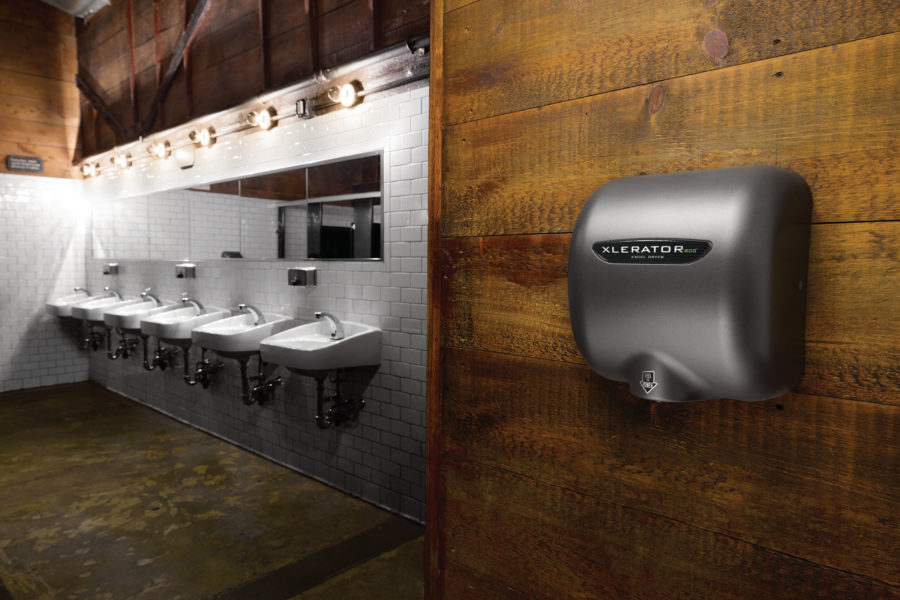
Inside Brooklyn Bowl. Photo courtesy of Excel Dryer
An array of misconceptions surrounds the eco-friendliness of paper towels (even the 100% recycled variety). Their environmental impact is felt throughout their entire life cycle:
Production. Paper towels are made from trees through a wasteful chemical or mechanical pulping process. One ton of virgin paper towels consumes 17 trees, uses 20,000 gallons of water, produces over three tons of CO2 emissions, and requires 40 cubic feet of landfill space.
Transportation. Gas-consuming, carbon-emitting delivery trucks are used to transport paper towels in every stage of their production, including lumber to mills, finished product to businesses and waste to landfills.
Use. Paper towels can create a major mess in restrooms—littering the floor, blocking sink drains, and clogging toilets. Even when 100% recycled paper towels make it to the waste receptacle, they have only a one-use life and cannot be recycled a second time.
Sustainability continues to factor more prominently in building design and construction. Public restrooms are essential components of building infrastructure and hand drying options should be carefully considered. The EPA reports that paper towels were included in approximately 7.4 billion pounds of “tissue” material waste in 2015.
High-speed, high-efficiency air hand dryers offer a more sustainable option for businesses seeking to modernize and improve their operations. When compared with recycled paper towels, energy-efficient hand dryers offer an 80% reduction in energy per use.
Cost Savings in High-Traffic Environments
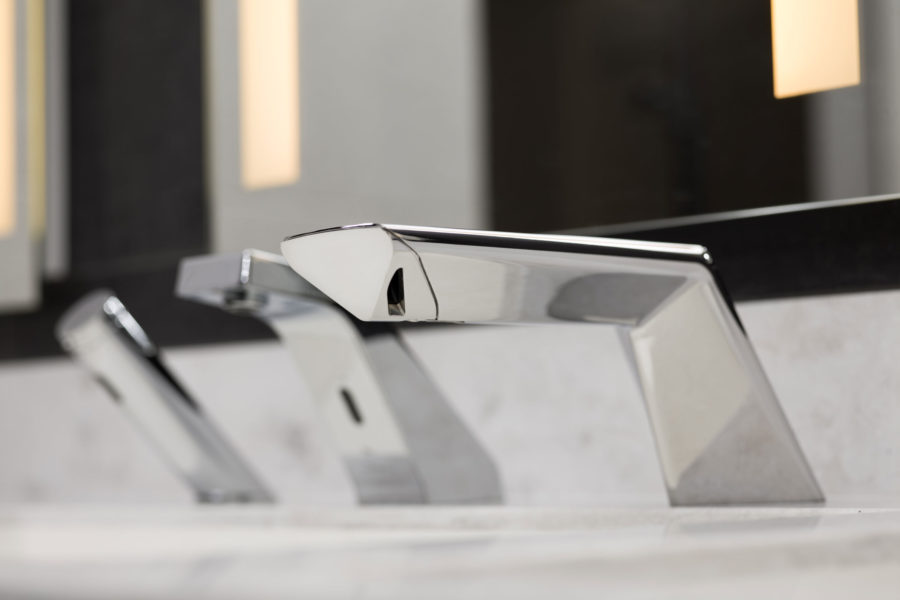
Photo courtesy of Excel Dryer
While the public’s focus is rightly on hygiene, facility owners also remain interested in cost-saving measures that provide a safe environment for guests in a Covid-conscious world. Many are once again attending large-scale sporting events and concerts, and that means high-traffic restrooms are a concern for these venues. While fans head to the restroom in large groups between innings or at halftime, facilities are looking for the best ways to get them in and out quickly, prevent a messy buildup of trash, and save money.
Two of the most successful and valuable sports franchises in the world rely on Excel Dryer to save money while providing a quick and hygienic experience for their fans. Prior to the D|13 Sink System installation in their Optum Field Lounge, the New England Patriots had turned to Excel in 2009 for the installation of 125 high-speed, energy-efficient XLERATOR Hand Dryers in the stadium’s restrooms. The Red Sox followed in 2013, installing 100 of the same products throughout iconic Fenway Park. Though these solutions were installed before the pandemic, they now provide the organizations with the tools they need to succeed in the current climate.
Directing Traffic with Excel
XLERATOR has a dry time of 8 seconds*, which blows away the competition; traditional dryers can take up to 30 to 45 seconds, which just isn’t sustainable for a sports stadium with tens of thousands of simultaneous visitors.
Paper towels can also quickly dry hands, but they create a mess and require a much larger focus on maintenance. Before XLERATORs were installed at Fenway Park, each restroom required between six and eight trash receptacles on average. That might not seem like too many, but each and every receptacle had to be repeatedly emptied throughout an event; that’s a lot of manpower. Now each restroom only requires one receptacle, allowing the maintenance crew to focus on other important work.
Calculating the Cost Savings
In addition to improving the overall stadium environment and experience, the installation of XLERATOR Hand Dryers provided both of these facilities with extensive cost savings over paper towels.
Originally equipped with paper towel dispensers, Gillette Stadium used an average of 6.3 million paper towels per year, at a cost of more than $50,000 for the towels themselves, maintenance, and waste removal. After updating, the venue saved 95% and reduced its carbon footprint by 70%.
Fenway was spending nearly $57,000 each year on paper towels, and that’s not even including the cost of maintenance and waste removal. Once again XLERATOR helped to solve both these issues, saving the park an estimated $83,000 annually—a 97% savings over paper towels. The facility saw a full return on their investment in just over 12 months, including installation costs.
It’s not just about saving money; a customized analysis revealed that XLERATOR Hand Dryers reduced Fenway Park’s hand drying carbon footprint by 82%. When spread over a year’s time, that reduction is approximately equal to saving 560 trees, 100 cubic meters in landfill space, 657,724 gallons of water and emissions from 620 gallons of gasoline.
As evidenced by Fenway and Gillette, paper towels are costly for a product frequently touted as recycled.
A Green Education
Like other high-traffic environments, it’s important for schools to provide their students and staff with a hygienic experience while also allowing for the most environmentally friendly atmosphere, which is why so many are turning to high-speed hand dryers.
As opposed to paper towels, Excel Dryer’s hand dryers require only a small amount of electricity for each use, which can last about 8 to 14 seconds* depending on the product. High-speed, energy-efficient dryers will also only operate when the sensor is activated so no energy is wasted, making them vastly superior to older push-button models, which generally run on timers, wasting energy by continuing to operate after hands have been dried.
Studies have also shown that the XLERATOR can reduce a facility’s hand drying carbon footprint by up to 75% when compared to traditional hand dryers and paper towels. That’s one of the major reasons why so many schools are installing Excel Dryer products during recent renovations.
Time to Throw in the Towel
In a Covid-conscious world, proper hand hygiene and the protection of public health are growing concerns guaranteed to influence the design and construction of public restrooms into the future. Facility executives can choose the ultimate hygienic solution, while also maintaining a focus on sustainability and cost savings, with Excel Dryer’s line of hygienic, high-efficiency hand dryers. Isn’t it time to throw in the towel?
*Dry time and energy use testing performed by SGS International on standard XLERATOR/XLERATOReco Hand Dryers with 0.8″ nozzle/standard Thin Air Hand Dryer to 0.25g or less of residual moisture, pursuant to the UL Environment Global Product Category Rules (PCR) for Hand Dryers.



